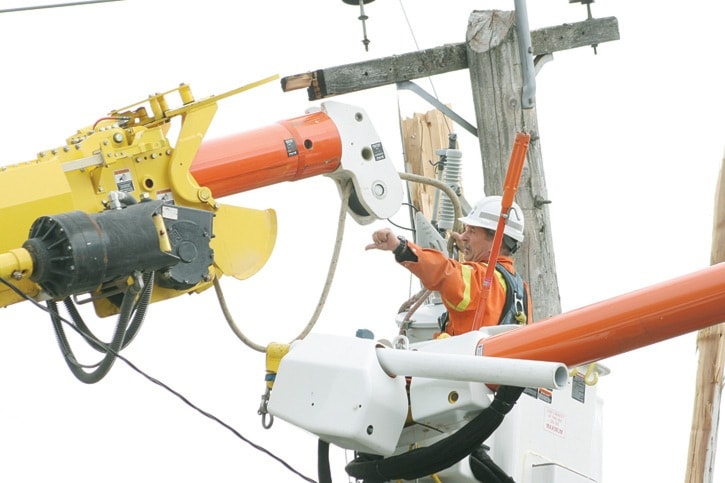Arriving at an accident scene within 25 minutes is well under the normal standard for BC Hydro, according to hydro spokesperson who took umbrage with Wednesday’s story, “Rescuers stalled by BC Hydro.”
“The article likely left readers with the impression that BC Hydro was slow in responding to safety,” wrote Karla Louwers, in an e-mail. “BC Hydro, particularly crews in Campbell River, find this distressing and we appreciate the opportunity for clarification.”
It’s the policy of BC Hydro to respond to downed power lines in urban areas within an hour and within two hours in rural areas.
The accident on Monday, around 4:45 p.m., involved a single car slamming into a utility pole in the 600 block of Alder St. In addition to electrical and communication cables, the pole supported a 1,000 pound transformer and a street light.
The force of the collision split the entire pole in at least three places and emergency responders on scene were unable to attend to the injured female driver until hydro crews arrived.
Some of the first responders on scene also expressed frustration with having to wait, but they also knew the safety of everyone was paramount, especially if the pole collapsed with live lines.
“My family expects me home tonight,” said one firefighter.
And the safety is the primary concern, Louwers stressed.
“The responders were not delayed by BC Hydro; they were responding as quickly and safely as possible due to the complexity of the accident,” she wrote.
“We understand in emergency situations time is critical, but corners cannot be cut when working with electricity. Our crews minimize the risks that could have led to serious injury or fatality not just of the victim, but other responders as quickly and safely as possible.”
The first hydro truck and crewman arrived approximately 25 minutes after the accident occurred.
However, after assessing the situation, the crewman waited for another boom truck to arrive in order to support the heavy transformer.
When he did arrive 10 minutes later, the two worked quickly and efficiently to support the transformer on the boom. They also ensured the 25,000 volt-circuit was de-energized – which occurred upon impact – and was also isolated. The latter is crucial, noted Louwers.
“Even if the entire town was de-energized, without isolating the circuit, there would still be potential of back-feeding into the system,” she wrote. “An example would be a portable generator plugged directly into the household circuit feeding into the electrical grid. This is why it is important to always stay at least 10 metres away from downed lines – you don’t know if they are energized.”
She also pointed out that hydro crews work normal daytime shifts and the crewman who responded to the accident were on call. They also don’t have the advantage of speeding to accident scenes using lights and sirens.
